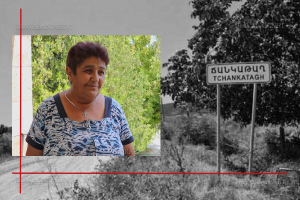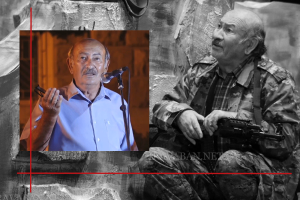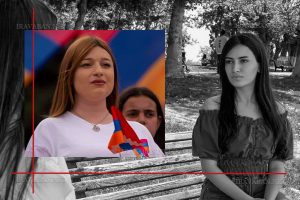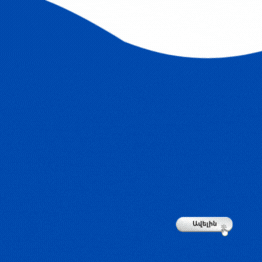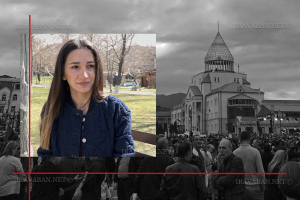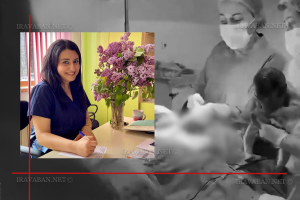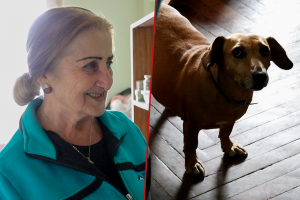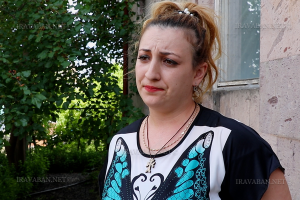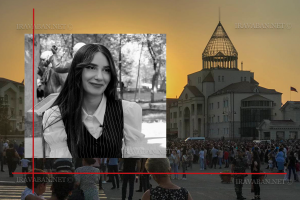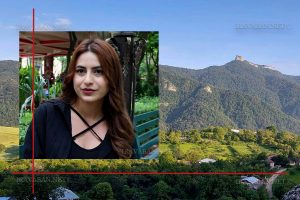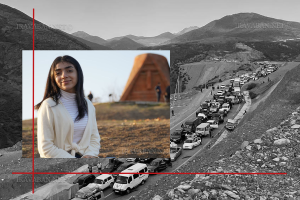“Anahit Hovakimyan lived in Vardadzor village of Artsakh. On 19 September, she was at home when Azerbaijan unleashed the war.
“We had hopes that the Russians are there and will protect us. We did not imagine that there could be such a large-scale fight, and the Russians would not help us. Every villager went from the village to keep the posts. Well, who would keep them? And where was the Russian base… There is a large base. We said, ‘well, the Russians are there, may the Turks shoot at us’,” she tells in the framework of “Artsakh: Armenian Genocide 2023. Stories of Survivors” documentary project of Iravaban.net.
According to her, their house was the only safe house in the village, when the shooting began, they went downstairs.
“It was terrible… It dawned, it was eight o’clock. We took the children and went up, but they were shooting. It didn’t stop for a minute. Our cannons were completely destroyed. The drones flew around all day, they knew all the places. There was no connection, no light, nothing. My husband came and said, ‘Escape, do it quickly, the Turks are in the village’,” Anahit said.
She said that the enemy had entered the village, they were not aware of it, they were sitting at home thinking, well, they are shooting, it is not the first time.
“We heard the voices of the villagers, ‘oh my leg, oh my hand’. They were in the village. For them (Azerbaijanis, ed.), there is no difference between peaceful and not peaceful. Were there peaceful any peaceful resident? They were killing the boys, the boys kept their weapons in their hands so that they (the Azerbaijanis, ed.) would not enter the village, and so that the villagers can escape. We hugged the children and ran out in what we were wearing, a robe, or slippers. The car came, we went out, and we didn’t take anything. I took only my passport and a bag, put my phone in my pocket, and left through the forest. We went to the forest, ten days of rain, mudslide, can you drive up there? You cannot. We went up for a kilometer; the car stopped and did not move. The village head brought gasoline and gave it to us. The gasoline was, given to distribute among the people so that they could escape in any case. He did not give it. That parasite, kept it till the very last moment. Where can you go, through the stones and mud? We left them there,” Anahit remembers those days, noting that they climbed up on foot when the drone struck from above.
According to her, they walked on foot until they reached the military vehicle that was supposed to transport the villagers.
“It took us till the asphalt, and let us there in mud, wet, hungry, and thirsty. That car went back to bring the rest. There, our neighbor’s son somehow placed us and took to Stepanakert airport. He disappeared there too, no doubt he ran out of fuel. We reached Khojalu (Ivanyan: ed.), yes, but what? Wow, wow! Full of people, the things scattered here and there. We didn’t manage to get anything, only the documents, they (Azerbaijanis, ed.), flooded the village – not one or two, a whole herd. If there were only ten of our boys defending they were one hundred and ten. What can they do, nothing,” Anahit said.
She said that the Azerbaijanis gave them water, waffles and chocolate near the Hakar bridge, which they threw away, until they reached Goris, where they got food.
“My son was wounded. The sniper shot at the post. We carried him with us for three or four days. When we came we saw that the wound was covered with pus. He should take antibiotics.”
“Artsakh: Armenian Genocide 2023. Stories of Survivors” documentary project of Iravaban.net is aimed at collecting the memories and testimonies of citizens forcibly displaced from Artsakh occupied by Azerbaijan, about the genocide of the Armenians of Artsakh committed by Azerbaijan, atrocities, the days of war, the path of deportation, etc.
Iravaban.net seeks help from citizens who will voluntarily agree to translate materials into different languages: Russian, English, French, Arabic, Persian, Turkish, Georgian, Chinese…
You can write to our e-mail address at: [email protected]
Details in the video.

